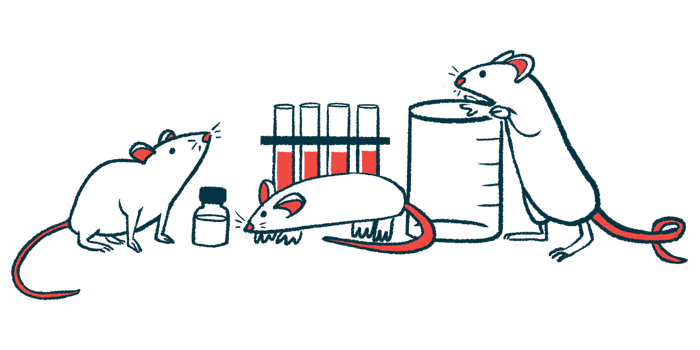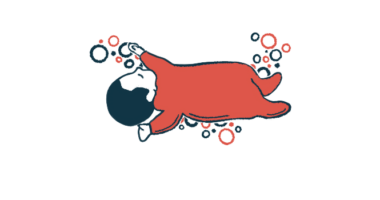Neurological issues ease with gene therapy in Gaucher mouse model
Treatment delivers healthy GBA1 gene, along with GDNF gene, to brain cells

A gene therapy designed to simultaneously deliver a healthy version of the GBA1 gene and the GDNF gene to cells in the brain eased neurological problems, prevented nerve cell death, and extended survival in a mouse model of Gaucher disease, a study shows.
The animals were designed to mimic neuronopathic Gaucher disease, which refers to forms of the disease marked by neurological complications. While treatments are available to address other symptoms of the disease, effective treatments for neurological symptoms are still lacking.
In the treatment, the healthy GBA1 gene was intended to address the underlying cause of Gaucher, while GDNF was intended to boost levels of GDNF, a growth factor that supports the health and survival of nerve cells, thereby providing additional neuroprotective benefits.
“These findings offer potential therapeutic strategies for [neuronopathic Gaucher disease] and other neurodegenerative diseases,” the researchers wrote. The study, “AAV-mediated GBA1 and GDNF rescue neurological defects in a murine model of neuronopathic Gaucher disease,” was published in Molecular Therapy Nucleic Acids.
In Gaucher disease, GBA1 gene mutations lead to a missing or defective glucocerebrosidase (GCase) enzyme, which is needed to break down a fatty molecule called glucocerebroside (Gb1), which accumulates, particularly in immune cells called macrophages. These Gb1-laden cells, referred to as Gaucher cells, build up in various organs, especially the liver, spleen, and bone marrow, causing the inflammation and damage that drive Gaucher’s symptoms.
Certain forms of Gaucher, namely the less common types 2 and 3, are considered neuronopathic, meaning Gaucher cells accumulate in the brain also, causing progressive and irreversible nerve damage and degeneration. These neurological issues are particularly severe and progress quickly in type 2.
There are no effective therapies available for managing Gaucher’s neurological manifestations. The main treatments — enzyme replacement therapy and substrate reduction therapy — work in different ways to lower Gb1 levels, but aren’t able to effectively reach the brain to protect it from damage.
Treating neuronopathic Gaucher with gene therapy
Here, scientists developed a dual gene therapy approach for treating neuronopathic Gaucher that’s designed to simultaneously deliver a working version of GBA1 and a copy of GDNF, a gene that provides the instructions for making a protein of the same name. GDNF is what’s known as a neurotrophic factor, growth factors important for nerve cell development and survival.
The researchers believe this two-pronged approach will help supply the body with the tools to produce more GCase via GBA1, while also boosting its ability to safeguard against neuronal damage by increasing GDNF production. The genes are packaged up into a viral carrier to help them be taken by cells.
The approach was tested in a mouse model of neuronopathic Gaucher that had markedly reduced GBA1 activity and no detectable GCase in the brain. Without treatment, the mice exhibited early and severe motor problems, along with neuronal damage and degeneration.
A single injection of the gene therapy directly into the brain tissue protected against weight loss, improved motor abilities, and significantly extended survival in the mice. It also protected against brain tissue loss and increased levels of other neurotrophic factors while reducing markers of cell death and inflammation. Additional experiments indicated the two genes may work together to prevent neuronal death by activating a signaling pathway called AKT/GSK-3 beta.
The gene therapy was also safe and didn’t lead to any substantial immune or inflammatory reactions.
“The combination of restoration of GCase expression and augmentation of neuroprotective pathways is innovative and clinically practical,” the researchers wrote, adding the dual approach “may provide a novel strategy and a proof-of-concept demonstration for the development of potential therapies for [neuronopathic Gaucher disease].”
Mutations in GBA1 have also been linked to some cases of Parkinson’s disease, a neurodegenerative condition. The scientists believe this therapy could be of benefit there also.




